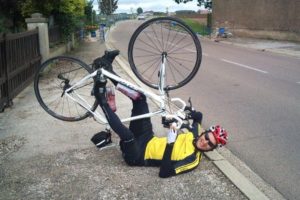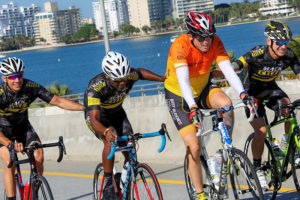What Can Pink Do For You?
Domestiques Make Your Ride Safe and Smooth
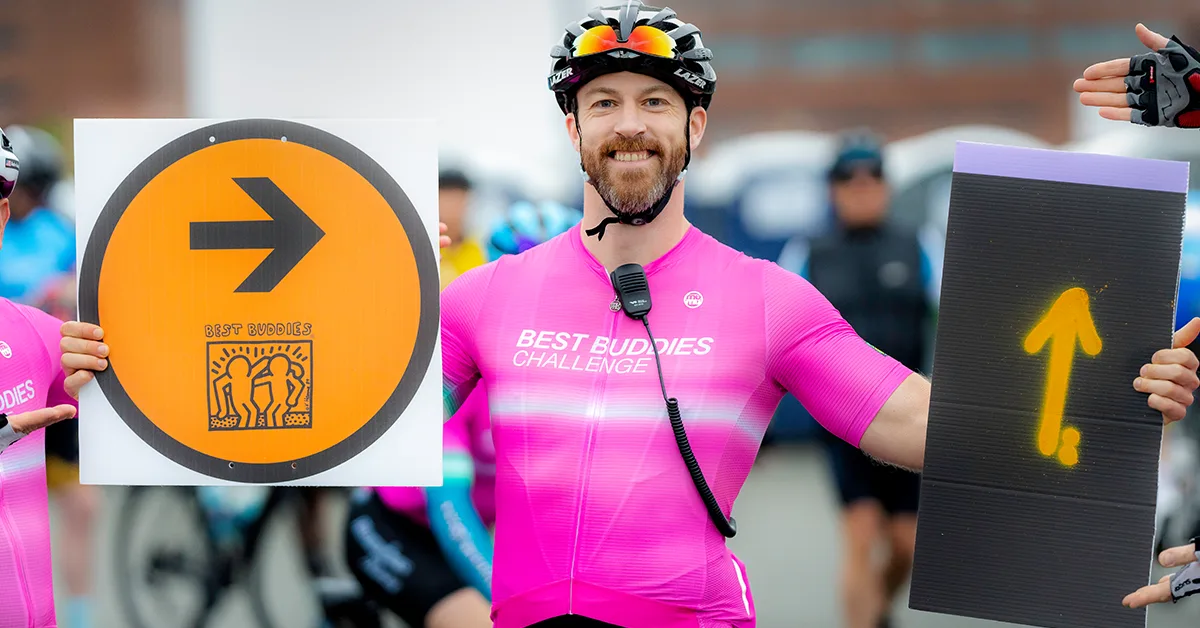
Most charity rides sprinkle “Ride Marshals” throughout the field. Typically they try to enforce some basic rules early in the ride and thereafter switch to riding ‘sweep’, helping to support suffering loners deal with punctured tubes and shattered souls.
Like other rides Best Buddies has those folks out there with extra tubes, tools, radios, snacks, and bottles to ensure every contingency is covered.
Best Buddies, however, goes above and beyond with its Domestique program. The French word for servant, a “Domestique” in cycling rides in support of a team leader. These Domestiques treat you as their team leader.
In addition to providing guidance and leadership on Best Buddies Challenge rides, the Domestiques also raise several thousand dollars in funds for Best Buddies as part of Team Wyatt.
The Domestiques are selected based on their cycling experience, leadership skills, and temperament. These Domestiques include former pro-level riders, Olympians, world champions, national champions, bicycle industry veterans and seasoned adventurers. Whether they ride at the front, in the middle, or on the back, they deploy group riding tactics to achieve three objectives:
- Make it Safe. The Domestiques ride not so much as cops or bosses, but as teachers. They keep the groups tight to the right side of the road and control the speed relative to each group. Additionally they ride in a courteous fashion to minimize hostile or dangerous car-bike encounters. And they may rein in some erratic, rude or dangerous riding habits with some teaching.
- Make it Smooth. After the early selection, the Domestiques will ride in a fashion designed to keep each respective group together. Using tactics developed by European clubs, the Domestiques roll at a pace that will mitigate surges and discourage swerving by riders. You’ll notice the pink jerseys either on the front of each respective group blocking the wind or at the back assisting the weaker riders.
- Make it Fun. Cycling is supposed to be a social endeavor. The Domestiques ride at a pace and in a formation to encourage talking, laughing or even occasionally singing. Riders who join into the Domestique pace groups report not only finishing far earlier than they ever expected, but also enjoying the experience.
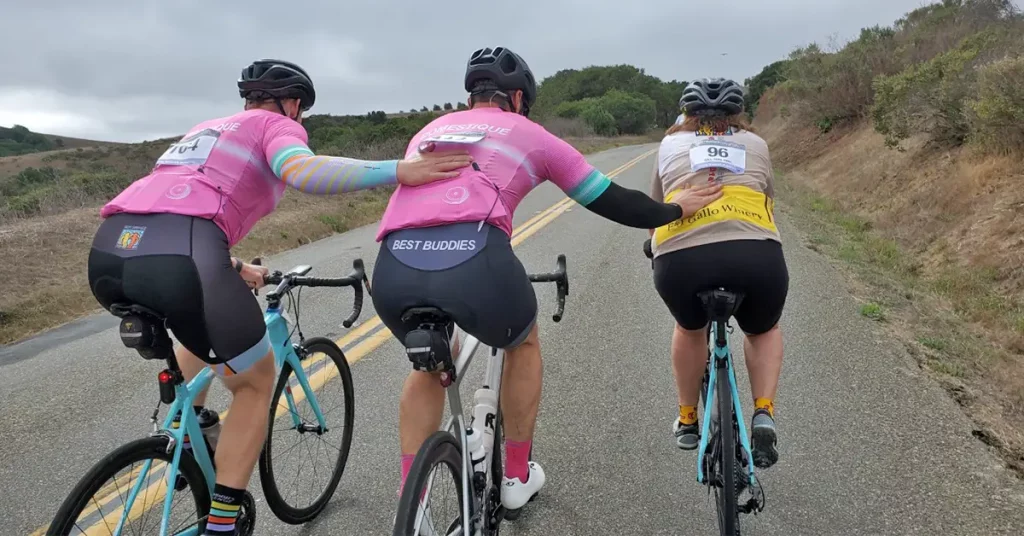
Novice and charity cyclists may find the Domestiques both confusing and daunting. At a minimum, these pink-clad riders can provide guidance to make any rider a more efficient cyclist; at their best, they can create a transcendent cycling experience.
That said, it may help to better understand how to best take advantage of this program.
This begins at the start line. Like Goldilocks, you want to select the pace group that is just right for your level and skill and fitness. Take some time at the start line to meet the Domestiques to determine if they are a good fit for you. There is a wide variety of Domestiques – male and female – with a range of personalities. Be ambitious. If you ride with these pace groups you may surprise yourself by finishing an hour sooner than expected. These groups will roll faster than you may train on your own. And if you find yourself in a group that is too fast you can always drift back to the next group. Because your average speed can prove confusing, Best Buddies simply set up an estimated time of day that each group will finish. The Domestiques will wear that time on their jersey and likely finish within 30 minutes of that target, some a little sooner and some a little later.
And yes, some of those Domestiques are assigned to ride “Sweep” at the back of the ride to ensure every rider is covered.
Once on the road, take advantage of those pink jerseys. They will ride at the front of the group in a steady manner blocking the wind for the entire group behind them. They will often ride in double file pace line, but may switch to single file in certain circumstances out of courtesy to other road users. That “2×2” formation is efficient and safe.
They will also ride in a manner that minimizes the “accordion effect”. They will climb really slowly to keep the group intact. But they will also descend swiftly to not allow the group to bunch up. Novices may initially become impatient. But over the course of the day this tactic ends up being the fastest. The goal of the Domestiques is to keep it rolling at a talking pace for each respective group.
The Rest Stops, where the pace groups may overlap, are also important. This is where you can ask questions, register some concerns, and consider changing groups, either faster or slower. Your Domestiques will let the group know how long they’ll take at each stop and with plenty of warning organize the re-start.
The payoff for riding in these groups comes in the last 20 miles of the ride. Legendary pro Tim Johnson – who has ridden as a Best Buddies Domestique – states that every long bike ride has three parts: the hard parts, the easy parts, and the silent parts. The final hour of your ride is the silent part. Being with the group during this phase pays off dramatically. And the bond you’ll create with your fellow riders is incredible.
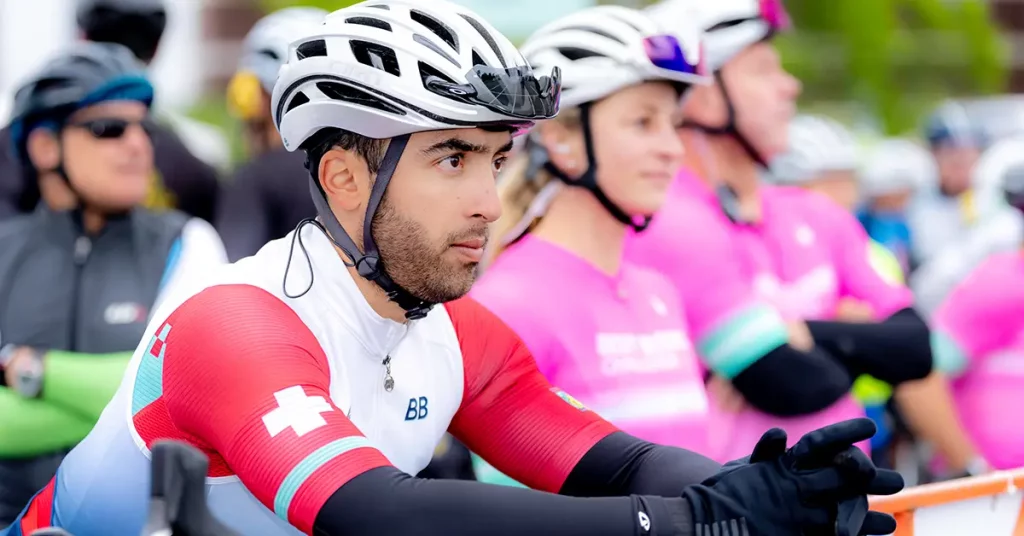
 Richard Fries is the Director of Cycling Experience for the Best Buddies Challenges. With more than 40 years experience, he has been a racer, commuter, tourist, promoter, advocate, journalist and commentator on the sport and lifestyle of cycling. Having raced at the professional level both in America and Europe, Fries is well known as a race announcer having called countless USA Cycling National Championships, World Cups, and UCI World Championships. But he is also a tireless advocate having recently served as the executive director of MassBike. You can follow him on Strava to learn more.
Richard Fries is the Director of Cycling Experience for the Best Buddies Challenges. With more than 40 years experience, he has been a racer, commuter, tourist, promoter, advocate, journalist and commentator on the sport and lifestyle of cycling. Having raced at the professional level both in America and Europe, Fries is well known as a race announcer having called countless USA Cycling National Championships, World Cups, and UCI World Championships. But he is also a tireless advocate having recently served as the executive director of MassBike. You can follow him on Strava to learn more.


